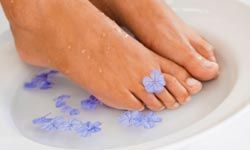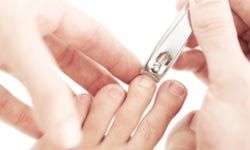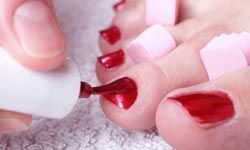Each year when winter ends, the warm weather rituals begin -- planting new flowers, buying spring clothes, getting outdoors. Among these time-honored traditions is the summer pedicure -- a time when women everywhere soak, file, pumice and polish until their toes are sandal-ready.
As wonderful as it feels to get a pedicure while you flip through the latest People magazine, salon pedicures take time and money that you don't always have. Years ago, I realized that regular salon or day spa pedicures can break the bank. So, I went the budget route, using an inexpensive walk-in place and ended up with a nasty little foot condition that made me swear off cheap pedicures forever. After all, there's nothing like a foot fungus to put the damper on summer sandals.
Advertisement
So what's a girl to do? Well, like The Home Depot used to say, "You can do it. We can help." A do-it-yourself (DIY) pedicure saves money, time, and you can schedule it whenever you want -- even 11 o' clock at night. The DIY pedicure can also be a great girls-night-in event, mother/daughter moment or a romantic evening of pampering if your significant other is willing to play along.
For your home pedicure, you'll need some supplies:
- tub or basin
- soaking salts or bubble bath
- towels
- cuticle oil
- nail file, clipper and cuticle stick
- pumice stone and foot file
- polish -- a top/base coat and color
- cotton pads (neater & more precise than cotton balls)
- foot cream
- nail polish remover
Now let's get started. We'll show you how to do this in 10 easy steps.




